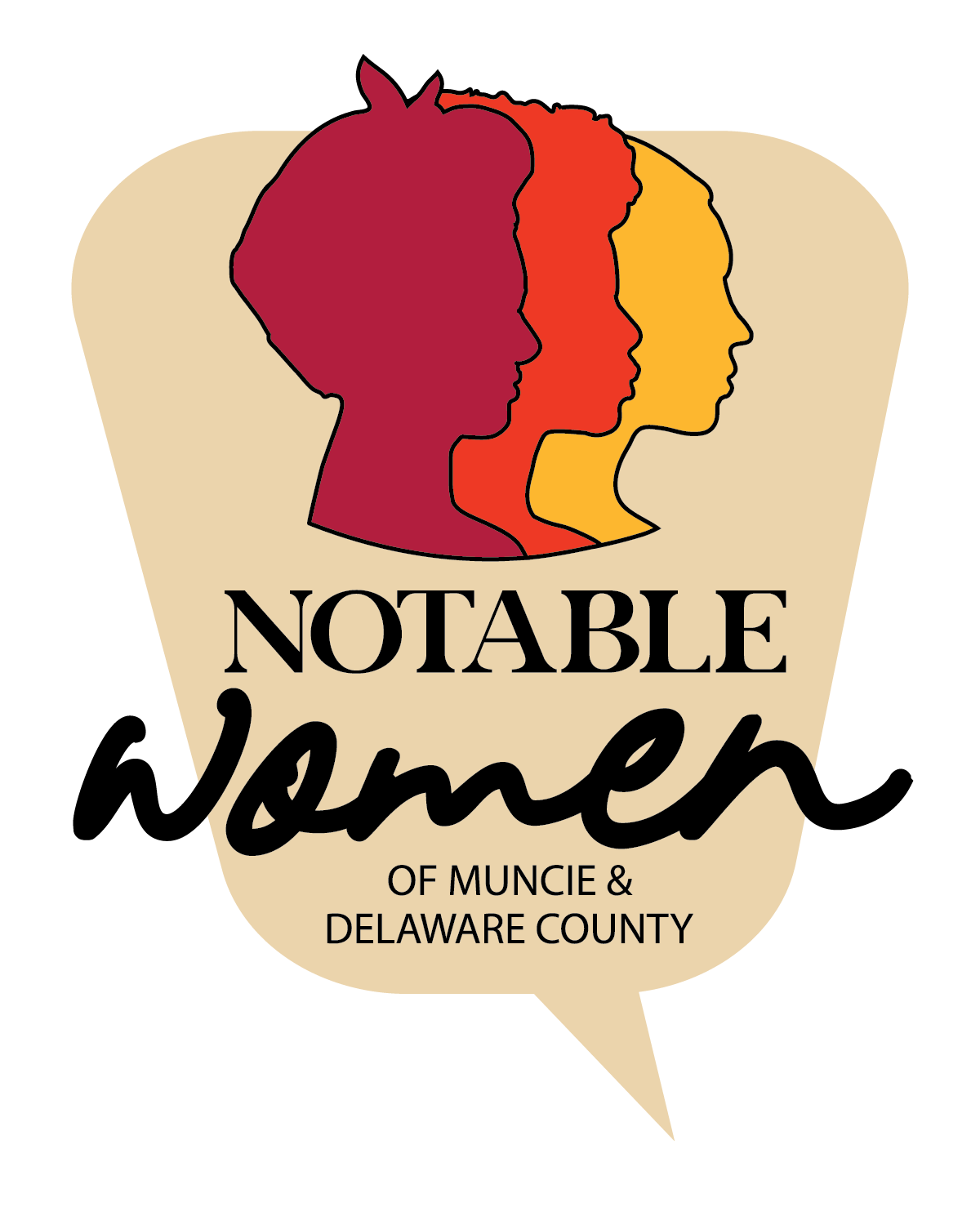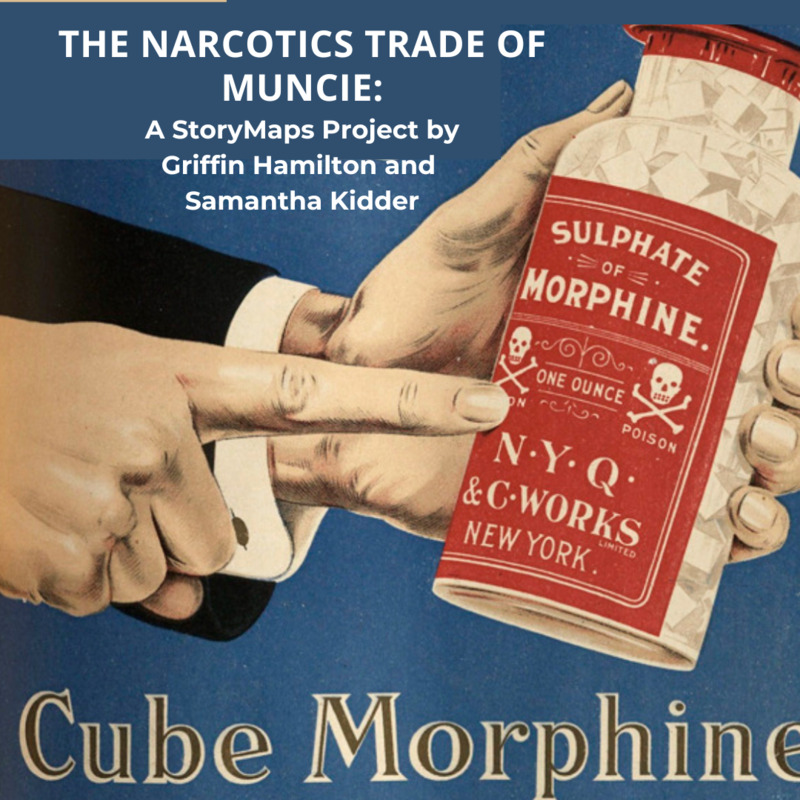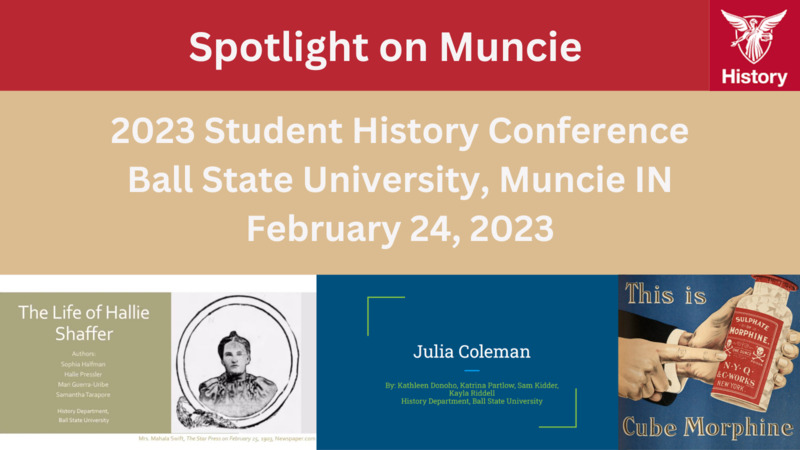Additional Sources
If you are interested in digging deeper into some of the themes, evidence, and historical narratives presented in this exhibition in the context of local history, check out the presentations below created by other students in past sections of HIST 200: Introduction to History and Historical Methods, History 414: Seminar in Middletown Studies, graduate classes, or the Teacher-Scholar Program at Ball State University.
To learn about Cocaine Alley, the racialization and gendering of drug use, and how Muncie struggled with controlling access to narcotics from 1870-1920, in this StoryMaps project created by Griffin Hamilton and Samantha Kidder (Summer 2022):
At the 2022 Ball State Student StoryMaps Competition for GIS, this work won the Best Small Group Category Award.
Interested in hearing more from the historians who investigated Muncie in the Progressive Era? Watch this recording of "Spotlight on Muncie," a session from the 2023 Ball State Student History Conference (90 mins.) to hear about the joys and challenges of tracking social and women's history:
https://youtu.be/vqMQT1-QBfw (Part 1, 30 mins.),
https://youtu.be/ldDaNQxmd9g (Part 2, 30 mins.),
https://youtu.be/RpGgQQL1Blk (Part 3, 15:16 mins.)
Work by Kathleen Donoho, Katrina Partlow, Halle Pressler, Sophia Halfman, Griffin Hamilton, and Samantha Kidder is presented here. The session was moderated by Melissa Gentry.
The Evolution of Getting a Living in Middletown is a Scalar website created by students who completed History 414: Seminar in Middletown Studies (taught by Dr. James J. Connolly) in Fall 2022. Students explored and documented the work experience from the late nineteenth century to the present using archival materials focused on Muncie, IN. This site traces changes in work during and after the period of rapid industrialization and the impact of deindustrialization on workers and companies, as well as the intersectional experiences of women, Blacks, and other minority groups.
Investigate prostitution in Gas Boom Muncie through mapping and primary source analysis with a StoryMaps project created for HIST 633 in Fall 2021 by MA students Cory Balkenbusch and Emily McGuire: White-Light and Red-Light Districts The Evolution of Vice in Gas Boom Muncie, 1880-1900, https://tinyurl.com/msbh247k
At the 2022 Ball State Student History Conference, this work won the Best Creative Project Award.
From 1880 to 1900, several East Central Indiana towns and small cities hosted a thriving brothel scene. Paradoxically, toleration of sex work existed alongside campaigns to arrest and fine sex workers and their clients. By exploring the reporting of sex work and the municipal preference of fines over expulsion, a deeper understanding emerges of sex worker careers and migration. In contrast to William Sanger’s prediction that sex workers on average lasted only a few years in the profession, newspaper reports reveal that some women worked in East Central Indiana for over a decade. Explore these issues in Muncie, Kokomo, Elwood, and Richmond in this journal article by Emily McGuire, Cory Balkenbusch and JM DeSilva, https://muse.jhu.edu/journal/826





